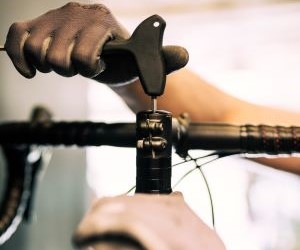Learn how to choose between clipless and flat pedals by comparing efficiency, control, comfort, and riding style to find the right setup for your needs.
WHAT FACTORS MATTER FOR DOWNHILL MTB BETTING—SEEDING RUNS VS FINALS?
Betting on downhill mountain biking requires understanding how seeding runs and final races differ. This guide examines the impact of rider form, track conditions, and strategy on betting outcomes for the UCI Mountain Bike World Series.

Understanding seeding runs
Seeding runs, also known as qualification runs, play a crucial role in downhill MTB events. They determine starting positions for the finals and offer valuable insight into rider form and track conditions.
Purpose and mechanics
Seeding runs are generally completed a day or a few hours before the final race. Each rider attempts the course individually, aiming for the fastest time. Results dictate starting order for finals, often giving an advantage to top qualifiers.
Top-seeded riders start last, gaining knowledge of track conditions from earlier runs.
Seeding runs allow riders to test lines, braking points, and technical sections.
They provide a benchmark for rider consistency and current form.
Impact on betting
For bettors, seeding runs offer data that can inform predictions. Strong performance in seeding runs often correlates with potential success in finals, but it is not always a guarantee. Track conditions can change, and some riders intentionally hold back during seeding.
Identify riders consistently improving lap times across practice and seeding.
Consider weather changes between seeding and finals that may favor certain riders.
Watch for strategic behavior—some top riders avoid maximal effort to save energy or reduce risk.
Factors affecting final runs
Final runs are where championships are decided, and betting stakes are highest. Multiple factors influence outcomes beyond seeding performance.
Rider psychology and pressure
The mental aspect is significant in finals. Riders starting later may face pressure from posted times. Some excel under pressure, while others may falter, impacting betting predictions.
Observe past finals performance under pressure for key riders.
Track consistency versus risk-taking tendencies in finals.
Consider riders’ adaptation to errors or mid-run adjustments.
Environmental factors
Weather and track evolution can dramatically affect final runs. Rain, temperature shifts, or track wear from previous runs can advantage certain riders, making seeding data less predictive.
Check weather forecasts for race day and during seeding runs.
Analyze track conditions—mud, loose rocks, and erosion impact rider performance.
Factor in how riders historically handle changing conditions.
Equipment and setup choices
Bike setup can differ between seeding and final runs. Tire choice, suspension settings, and brake adjustments are tailored for optimal performance, affecting final results.
Observe adjustments riders make post-seeding for improved performance.
Consider tire compounds suited for changing terrain or weather.
Track mechanical reliability history of riders and teams.
Seeding vs finals performance trends
Analyzing historical data can highlight how seeding run times correlate with final race outcomes. Some riders excel in seeding but underperform in finals due to pressure, fatigue, or risk management.
Rider-specific patterns
Top-level riders often display predictable trends. For example, aggressive qualifiers may peak early but make mistakes in finals, while consistent performers might improve their times and outperform expectations.
Review multiple seasons’ data for key riders to spot tendencies.
Compare seeding time variance with final outcomes.
Identify riders known for strategic conservation in seeding runs.
Event-specific insights
Different tracks may favor different riders. Technical courses often reward experience and precision, while fast, flowing tracks may benefit raw speed. Historical event data can refine betting strategies.
Evaluate which riders historically improve between seeding and finals on specific tracks.
Consider terrain type, elevation change, and technical difficulty.
Use past event variability to assess risk in betting odds.
YOU MAY ALSO BE INTERESTED






